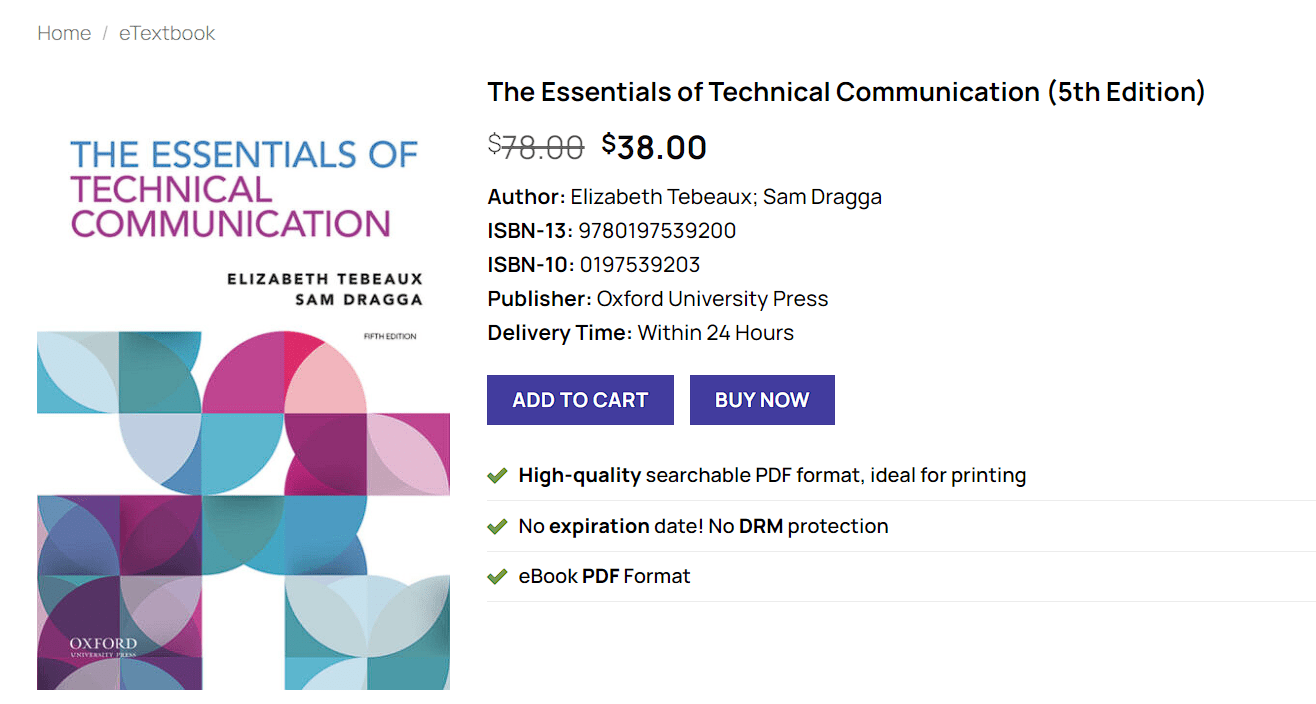The Essentials of Technical Communication 5th Edition is an essential skill that facilitates the clear and effective dissemination of complex information to specific audiences. It encompasses a broad range of documents, including user manuals, reports, and instructions, that require clarity, accuracy, and audience awareness to ensure their purpose is fulfilled successfully. The 5th edition of ‘Essentials of Technical Communication’ delves into these core principles, offering updated insights and examples that reflect contemporary challenges and advancements in the field.
Clarity in technical writing ensures that the message is easily understood by the target audience, minimizing confusion and enhancing comprehension. Accuracy, on the other hand, is critical because it maintains the integrity and reliability of the information being communicated. Audience awareness involves tailoring the content to meet the specific needs and expectations of the readers, which can vary significantly across different professional fields.
Mastering technical communication is crucial for professionals across various industries, including engineering, information technology, healthcare, and more. Engineers, for example, must convey technical specifications and safety instructions with precision, while IT professionals need to document software processes and system requirements effectively. In healthcare, clear communication of medical procedures and patient care guidelines is vital to ensure safety and compliance.
The 5th edition of ‘Essentials of Technical Communication’ builds on the strong foundation of its predecessors by incorporating updated examples and addressing contemporary issues. This edition recognizes the evolving landscape of technical communication, including the increasing importance of digital media and the need for accessibility in documentation. By integrating these modern elements, the book provides a comprehensive guide that remains relevant and practical for today’s professionals.
Ultimately, proficiency in technical communication not only enhances individual career prospects but also contributes to the overall efficiency and effectiveness of organizational operations. By understanding and applying the principles outlined in the 5th edition, professionals can ensure their technical documents are clear, accurate, and audience-focused, thereby achieving successful communication outcomes.
Key Concepts and Principles in the 5th Edition
The 5th edition of ‘Essentials of Technical Communication’ highlights several key concepts and principles crucial for effective technical writing. One of the foundational aspects is the process of planning and drafting technical documents. This involves understanding the purpose of the document, identifying the target audience, and organizing information logically. Effective planning ensures that the content is relevant and meets the needs of its intended readers, making the document more impactful.
Another significant principle is the role of visuals in technical communication. Visual aids such as charts, graphs, and diagrams can greatly enhance the clarity and comprehension of complex information. They serve as essential tools for illustrating data, explaining processes, and highlighting key points. When used appropriately, visuals can make technical content more accessible and engaging for the audience.
Usability testing is also emphasized in the 5th edition. This process involves evaluating a document with real users to ensure that it is easy to understand and use. Usability testing helps identify potential issues that may hinder the reader’s ability to comprehend the information. By incorporating feedback from users, writers can refine their documents to improve overall usability, making them more effective and user-friendly.
The principles of effective document design are another critical focus area. Elements such as layout, typography, and accessibility play a vital role in creating documents that are both informative and easy to navigate. A well-designed layout guides the reader through the content logically, while appropriate typography ensures readability. Additionally, accessibility considerations ensure that documents are usable by individuals with various disabilities, promoting inclusivity.
Practical applications of these concepts are evident in various types of technical documents, including user manuals, project reports, and technical instructions. For instance, a user manual with a clear layout, concise language, and helpful visuals can significantly enhance the user experience. Similarly, a project report that incorporates usability testing results will likely be more effective in communicating its findings to stakeholders.
By applying these The Essentials of Technical Communication 5th Edition principles, technical writers can create documents that are not only informative but also user-friendly, ultimately achieving their communication goals more effectively.

